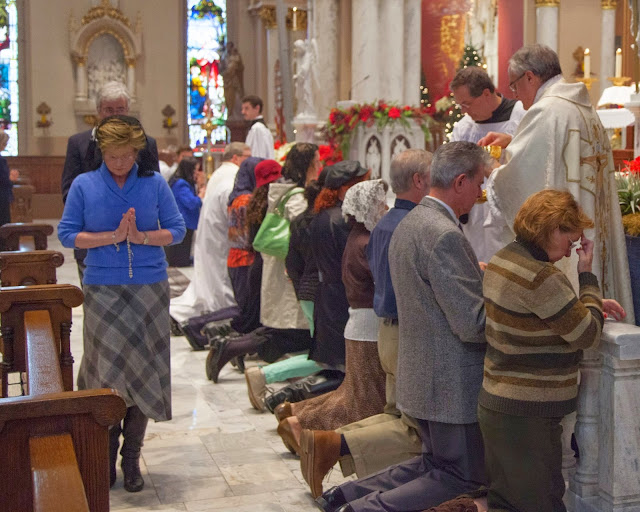From the National Catholic Register: (The) Eucharistic crisis is shown, for example, in the fact that only one out of five Catholics in the United States comes to Mass each Sunday, and far fewer attend holy days of obligation, like next Thursday’s celebration of the Lord’s Ascension. (My comment: and here bishops of various metropolitans, like Atlanta, approved moving Ascension Thursday to the following Sunday, perform two miracles, saying 43 days after Easter is 40 days and that Sunday is a Thursday! And in the Savannah Dioceses, Masses were packed for the Holy Day of Obligation that was once the actual day of the Ascension—they intentionally broke something that did not need to be fixed!)
It’s also evidenced in recent surveys that show that only three of 10 Catholics, and only half of those who attend Mass each Sunday, believe what the Church boldly professes about the Eucharist: that the Eucharist actually and astonishingly is Jesus — his Body, Blood, Soul and Divinity — under the appearances of bread and wine; that after the words of consecration, God himself is really, truly and substantially present on our altars, in our tabernacles and within us who receive him.
As the Second Vatican Council famously described, the celebration of the Eucharist is the source, summit, root and center of Catholic faith and life. If, therefore, Eucharistic faith and practice are weak, then all of Catholic life is enfeebled. Hence the urgency and importance of the Eucharistic revitalization.
My Comments: I am happy that the USCCB recognizes the debacle of so many of the reforms of the Second Vatican Council as these were implemented and called liturgical renewal. Here is their plan: Eucharistic revitalization initiative.
Let’s take the modern Roman Missal off the table as the culprit, because it isn’t the culprit. The culprit is the rubrics of the Mass, so dumbed down as to make them irrelevant compared to the rubrics of the Ancient Roman Missal. In fact, being called “rubrical” after Vatican II was a part of the hermeneutic that Pope Francis has gone backwards to, to ridicule certain aspects of the pre-Vatican II Church and her liturgy. Rubrical was a denigration.
In addition to the worthy components of Eucharistic Revival that the USCCB want to use, rubrical changes need to take place too. What are these?
1. Altar railings should be restored and kneeling to receive the Most Precious Body and Blood of our Risen Lord should be the norm.
2. Receiving Holy Communion exclusively on the tongue
3. Only clerics and formally installed acolytes (with the expansion Pope Francis has enabled) are to distribute Holy Communion at Mass and to the home bound.
Catholics, clergy and laity, are to model and be witnesses to the reverence that is due to Christ in the Most Holy Eucharist, at Mass, at Holy Communion time, in Exposition of the Most Blessed Sacrament and in the tabernacle restored to the central axis of church buildings.
These things will do more than any kind of verbal and written catechesis.


3 comments:
I agree with you, it's the rubrics and the choreography. The missal itself isn't bad. If the rubrics don't change, you can have all the classes/revivals you want, people won't buy into it as they won't have the visual to back it up. The loss of Ad Orientem, to me, was the most devastating change.
Symbols are important. Yes, Communion in the paw is deleterious to belief. Maybe that's why only 30% of OF attendees believe in the Real Presence
The notion of a high schooler distributing holy communion to her peers was likely well intended however, if unconsecrated hands of civilians that, perhaps aren't properly disposed themselves to receive let alone handle the sacred elements is ok, I'm sure many started to no longer see the value of the presbyterate itself. Perhaps inclusivity and active participation taken to a poorly thought out extreme.
Post a Comment